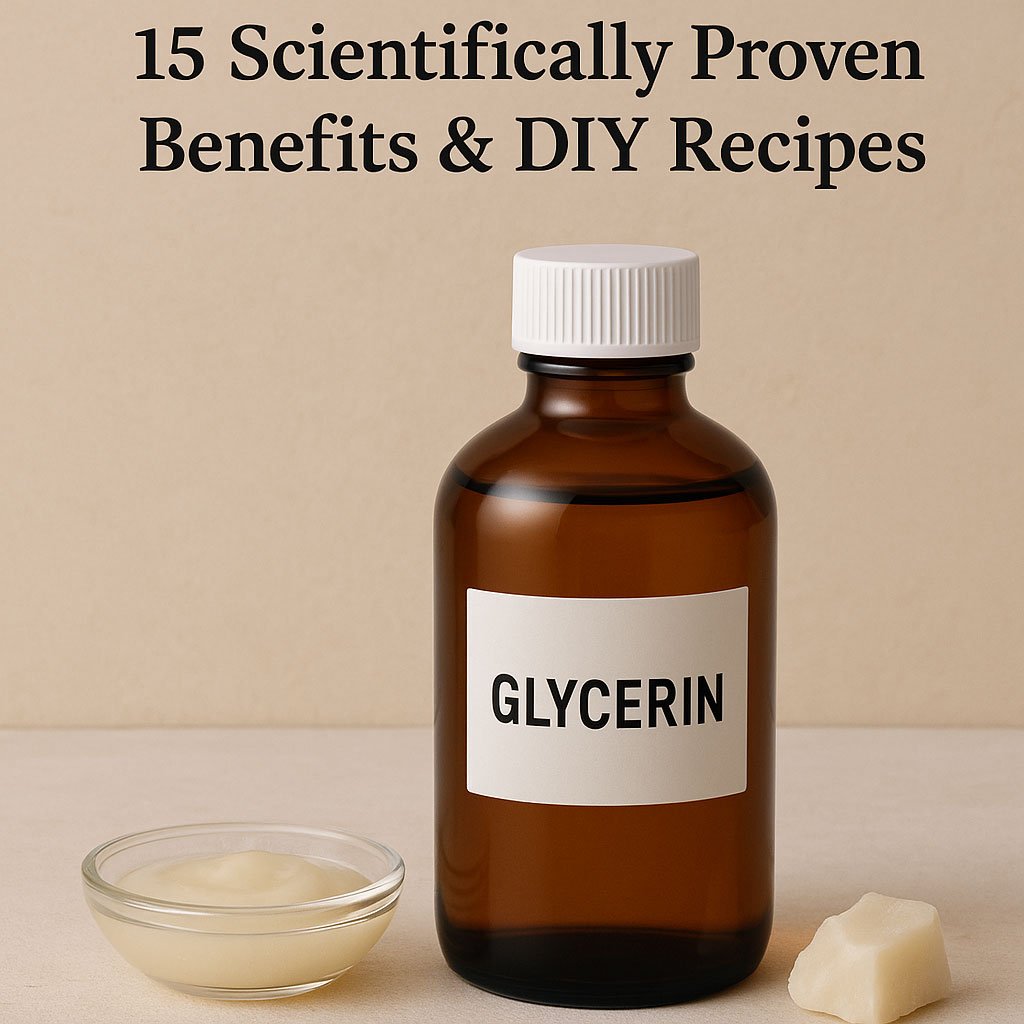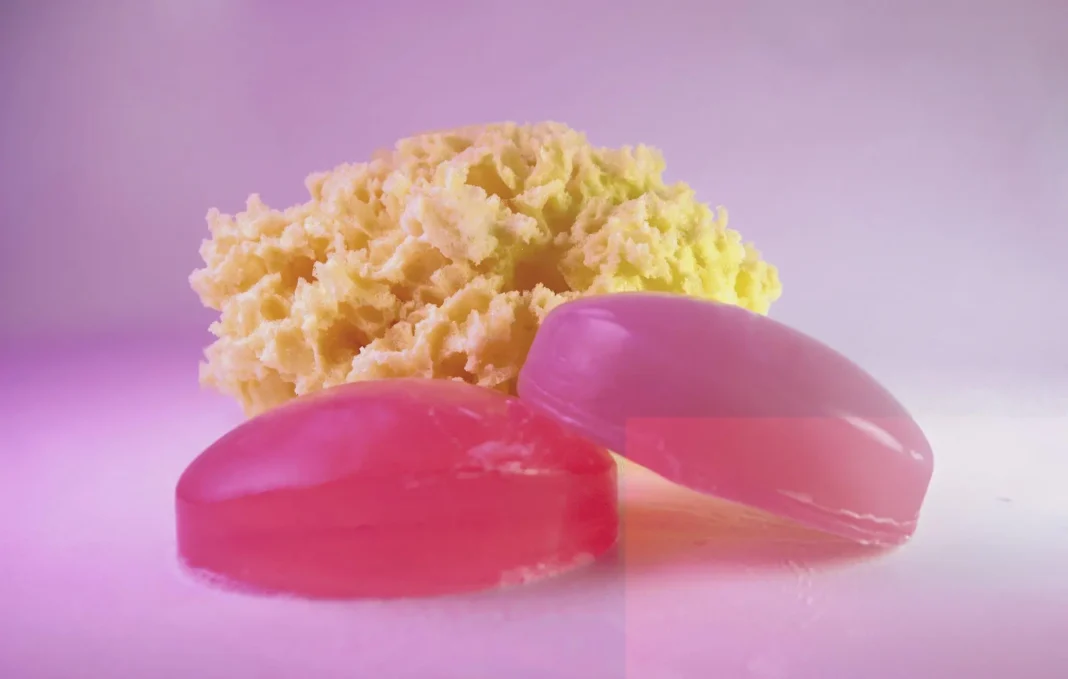If you’ve ever struggled with dry skin, acne, or premature ageing, only to find that expensive creams fall short, you’re not alone.
I spent years (and hundreds of dollars) hunting for the perfect skincare solution until I discovered glycerin for skin.
This underrated, wallet-friendly ingredient transformed my skin more than any luxury serum ever did.
In this deep dive, I’ll share:
✔ What glycerin does (backed by dermatologists)
✔ 15 proven benefits (from healing eczema to fading scars)
✔ Step-by-step DIY recipes (tested by me!)
✔ Common mistakes (e.g., why pure glycerin can damage skin)
✔ Glycerin vs. hyaluronic acid, snail mucin, and more
Let’s get started!
What Is Glycerin? (The Science Simplified)
Glycerin (aka glycerol) is a natural humectant—a substance that attracts water like a magnet. It’s derived from:
- Plants: Coconut, soy, or palm oil (vegetable glycerin)
- Animals: Tallow (less common in skincare today)
- Synthetic sources: Petroleum (used in cheap products)
Why It Works
- Humectant Power: Draws hydration from the atmosphere or from the inner layers of the skin into the outermost layer (stratum corneum).
- Barrier Protector: Strengthens the skin’s natural shield against pollution and bacteria.
- Universal Compatibility: Suitable for all skin types, including those that are sensitive or prone to acne.
Fun Fact: Glycerin is found in 93% of moisturisers, but most brands use too little to be effective.

15 Evidence-Based Benefits of Glycerin for Skin
1. Deep Hydration Without Greasiness
Unlike heavy oils, glycerin hydrates without clogging pores. A 2017 study found it increases skin moisture by 40% within 30 minutes.
Personal Hack: Mix 1 tsp glycerin + 2 tbsp aloe vera gel for a lightweight summer moisturiser.
2. Repair a Damaged Skin Barrier
Eczema or rosacea? Glycerin helps rebuild the lipid barrier, reducing redness and flakiness.
Case Study: Patients with atopic dermatitis saw a 50% improvement after 4 weeks of glycerin-based creams.
3. Reduces Wrinkles & Plumps Skin
By swelling skin cells with water, glycerin temporarily smooths fine lines. Research shows it’s as effective as hyaluronic acid but longer-lasting.
4. Soothes Acne & Prevents Breakouts
Glycerin is non-comedogenic (won’t clog pores) and has anti-inflammatory properties. Ideal for cystic acne sufferers (like me!).
Pro Tip: Dab diluted glycerin (1:3 with water) on active pimples overnight to calm redness.
5. Heals Cracked Heels & Elbows
A 2020 study found glycerin accelerates wound healing by 30%. Try this overnight foot mask:
- 2 tbsp glycerin
- 1 tbsp honey
- 1 tsp lemon juice
Apply, wear socks, and wake up to baby-soft feet!
6. Fades Dark Spots & Scars
Glycerin promotes cell turnover, helping fade post-acne marks. Pair it with vitamin C for faster results.
7. Protects Against Harsh Weather
Cold winters? Glycerin acts like an invisible glove, preventing moisture loss in dry climates.
8. Safe for Sensitive Skin
Unlike fragrances or alcohols, glycerin rarely irritates. The FDA classifies it as “generally recognised as safe” (GRAS).
9. Balances Oily Skin
Sounds counterintuitive, but dehydrated skin often overproduces oil. Glycerin hydrates deeply, reducing excess sebum.
10. Enhances Other Skincare Ingredients
Glycerin enhances the absorption of active components such as retinol or niacinamide, allowing them to penetrate more deeply.
11. Antibacterial & Antifungal Properties
Studies show it inhibits Staphylococcus aureus (a common acne bacterium).
12. Soothes Sunburn
Mix glycerin with aloe vera and chamomile tea for a cooling post-sun treatment.
13. Prevents Trans-Epidermal Water Loss (TEWL)
A 2022 study found glycerin reduces TEWL by 60%, keeping skin hydrated longer.
14. Safe for Babies & Pregnancy
Pediatricians recommend glycerin-based lotions for baby eczema because it’s non-toxic.
15. Eco-Friendly & Cruelty-Free
Plant-based glycerin is biodegradable and vegan (unlike animal-derived versions).
Glycerin vs. Other Humectants: Which Is Best?
| Ingredient | Best For | Drawbacks |
| Glycerin | Long-term hydration | Sticky if overused |
| Hyaluronic Acid | Instant plumping | Doesn’t last all day |
| Snail Mucin | Healing wounds | Expensive |
| Honey | Antibacterial | Can be messy |
Verdict: Glycerin is the most cost-effective and versatile option.
How to Use Glycerin: 7 DIY Recipes
1. 3-Ingredient Hydrating Serum
Ingredients:
- 1 tbsp glycerin
- 3 tbsp rosewater
- 2 drops of vitamin E oil
Method: Mix, store in a dropper bottle, and apply before moisturiser.
2. Overnight Eczema Relief Mask
Ingredients:
- 1 tbsp glycerin
- 1 tbsp colloidal oatmeal
- 1 tsp manuka honey
Method: Apply to dry patches, leave for 20 mins, rinse.
3. Acne-Fighting Toner
Ingredients:
- ¼ cup witch hazel
- 1 tsp glycerin
- 5 drops of tea tree oil
Method: Shake well, apply with a cotton pad.
(See full article for 4 more recipes, including a glycerin hair mask and lip plumper!)
Common Glycerin Mistakes to Avoid
Using 100% pure glycerin → Can reverse-draw moisture from skin if not diluted.
Mixing with drying ingredients (e.g., alcohol, clay) → Counteracts hydration.
Applying to broken skin → May sting (always patch-test first).
Pro Tip: Ideal dilution is 5–15% glycerin (e.g., 1 tsp glycerin + 5 tsp water).
Final Verdict: Is Glycerin Worth It?
Absolutely! It’s affordable, efficient, and supported by scientific research—regardless of whether your skin is dry, oily, or sensitive.. My routine now includes:
- Glycerin toner (AM/PM)
- Glycerin + squalane moisturiser (at night)
- Glycerin hand cream (for cracked cuticles)
Where to Buy: Opt for vegetable glycerin (like Now Solutions or Heritage Store) on Amazon or in health stores.











